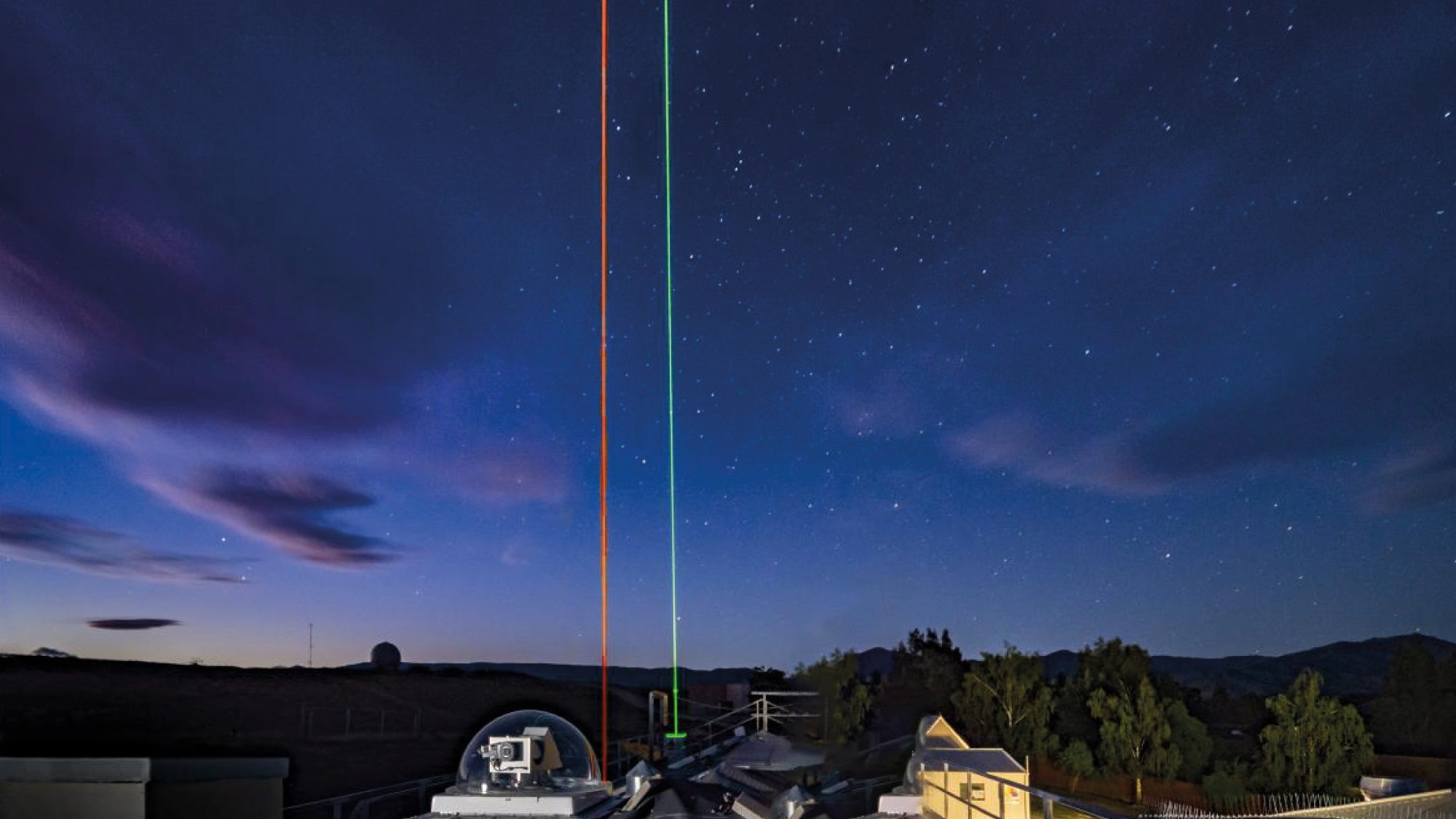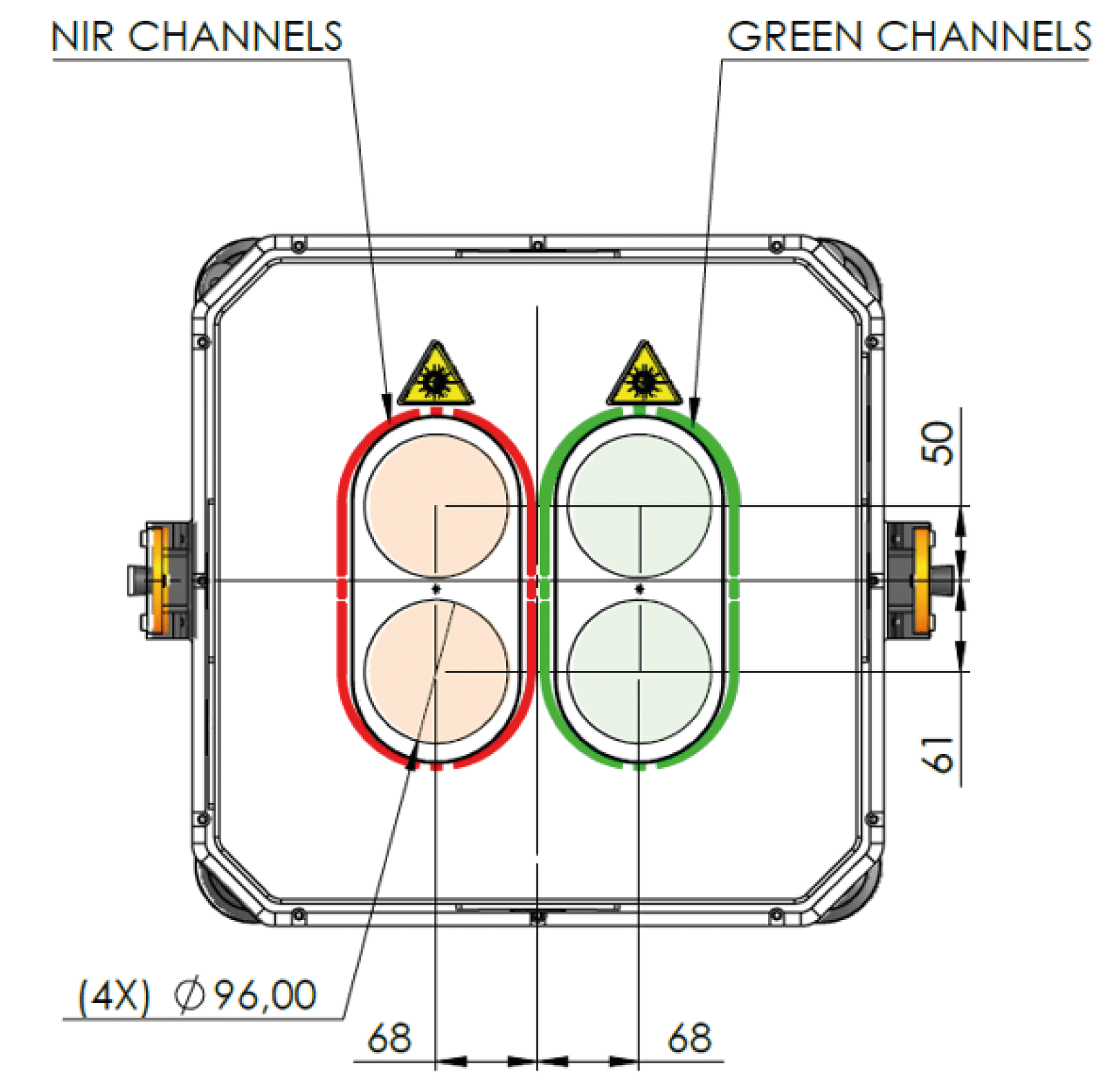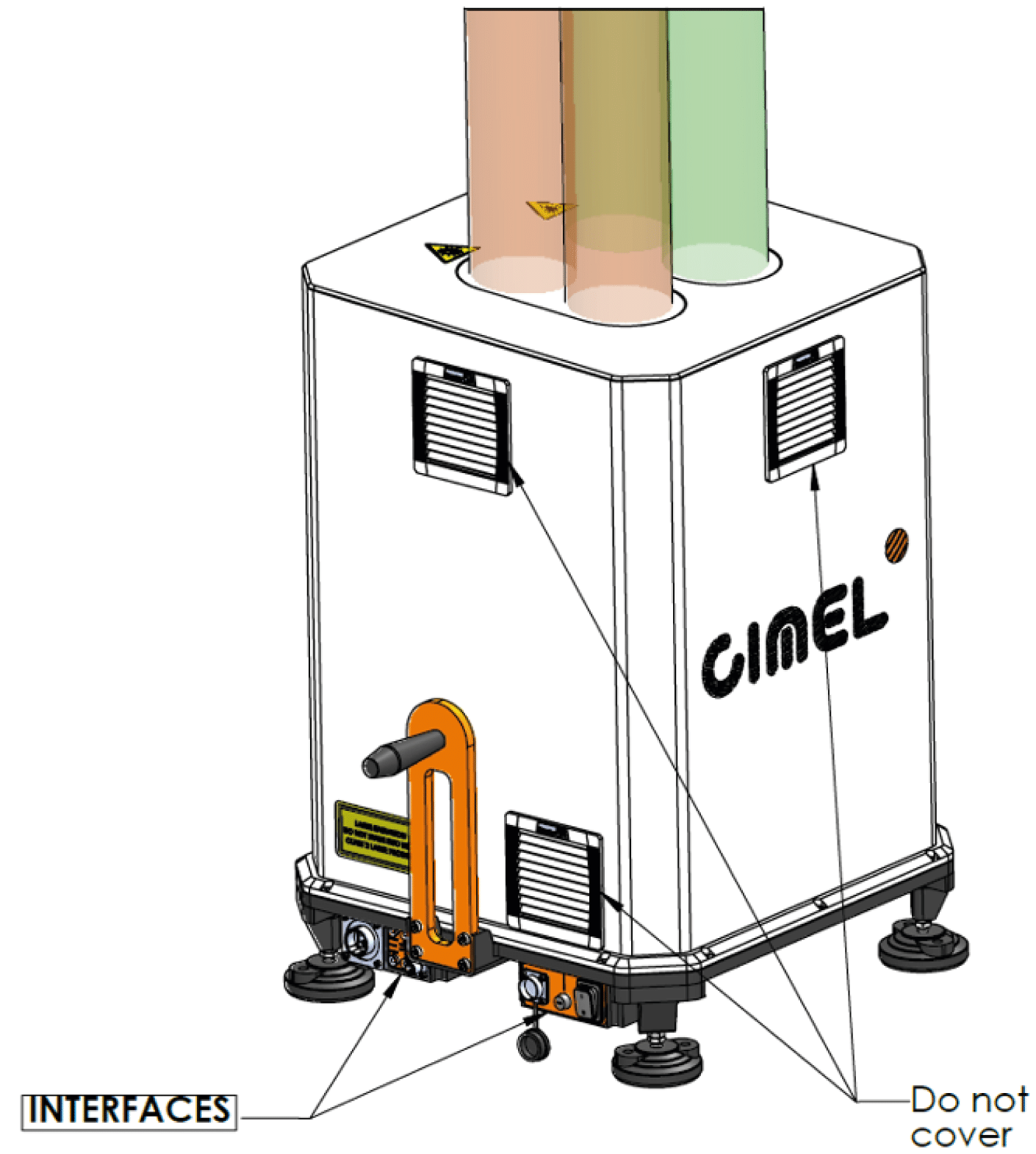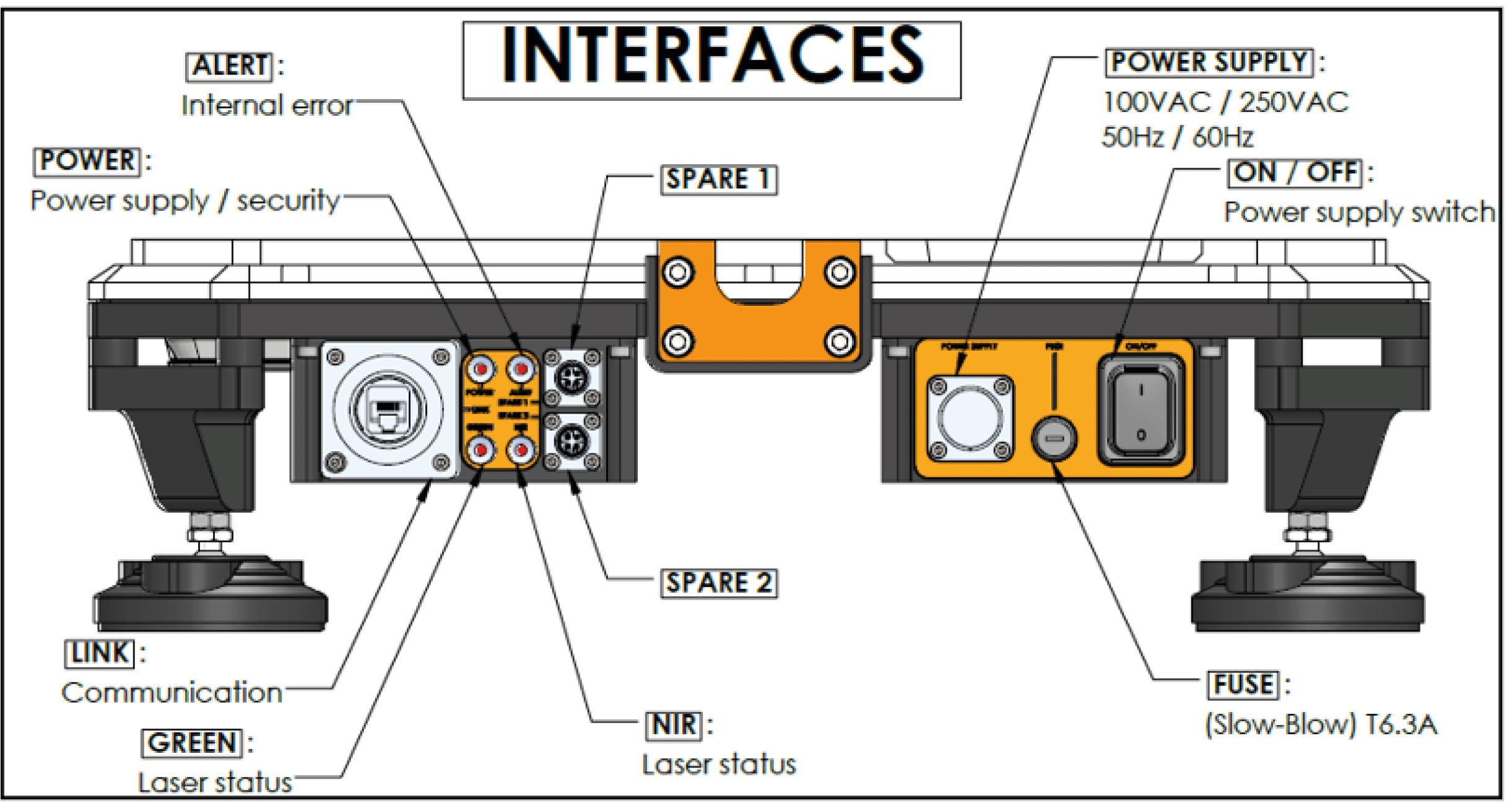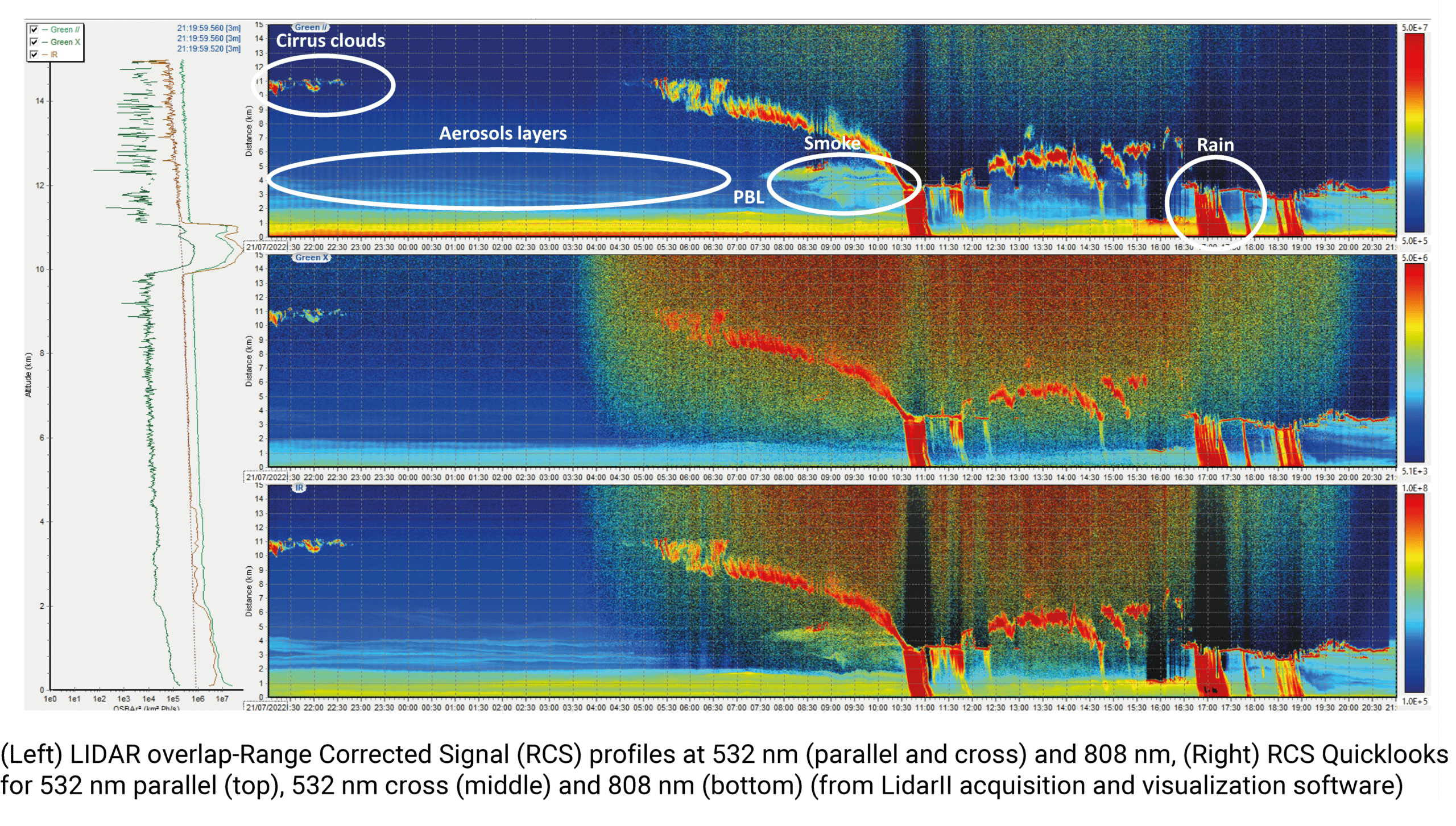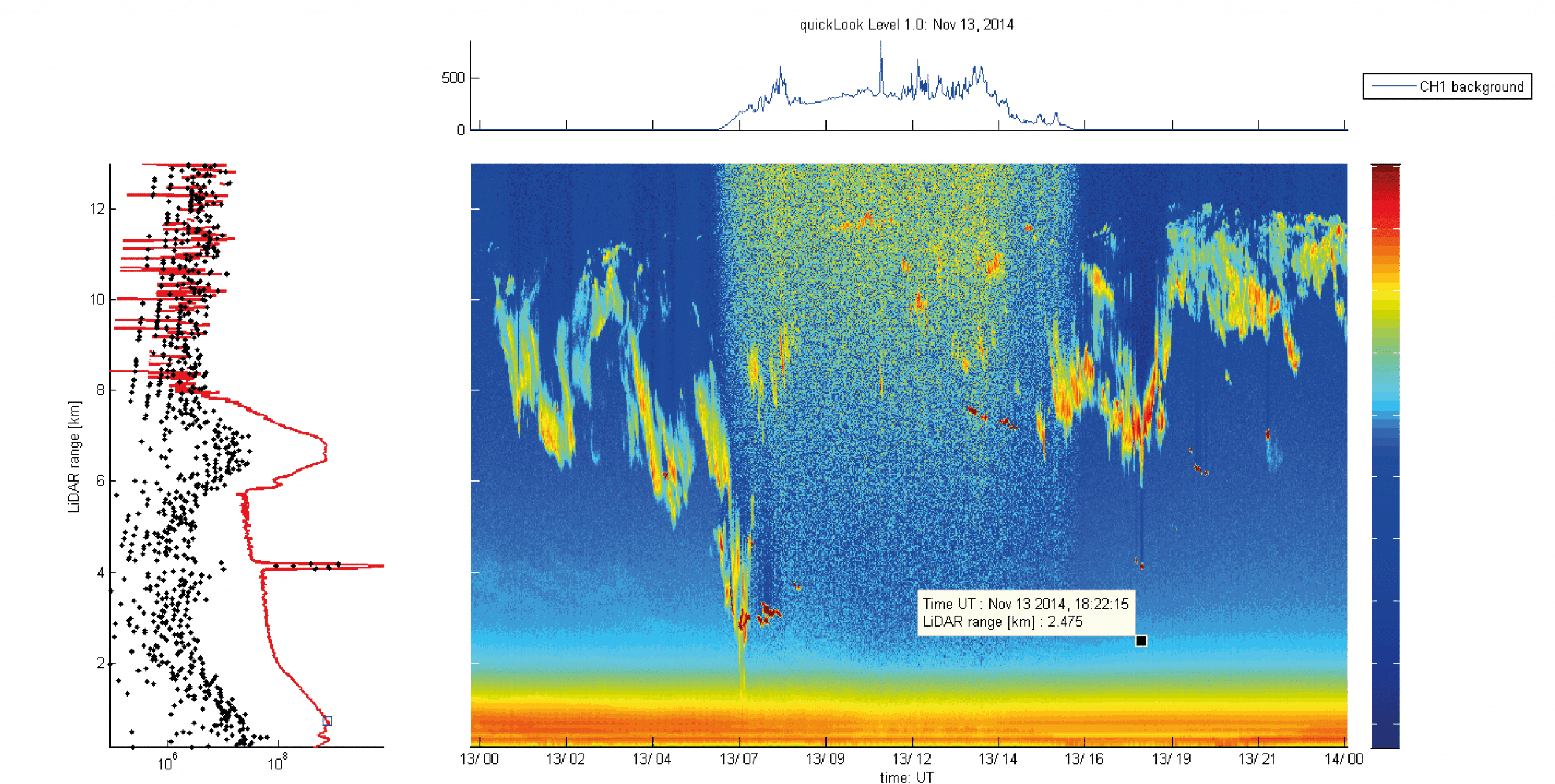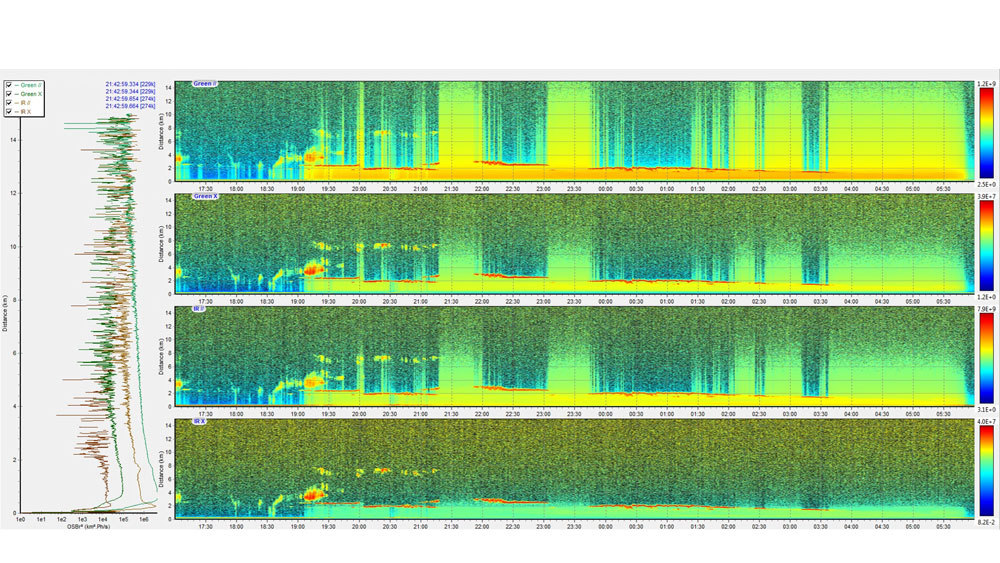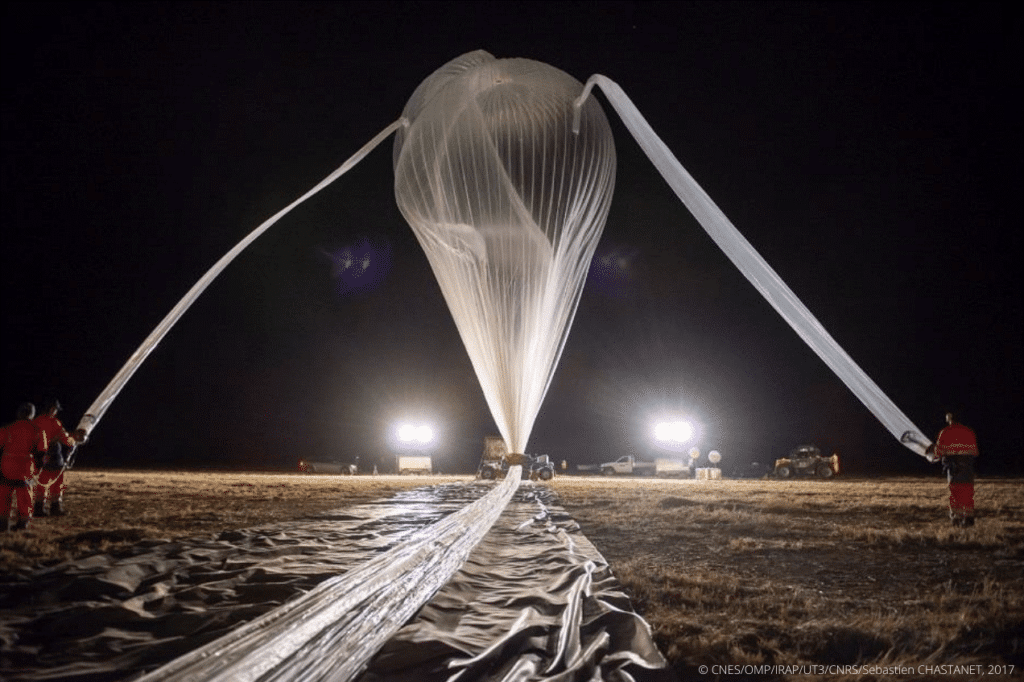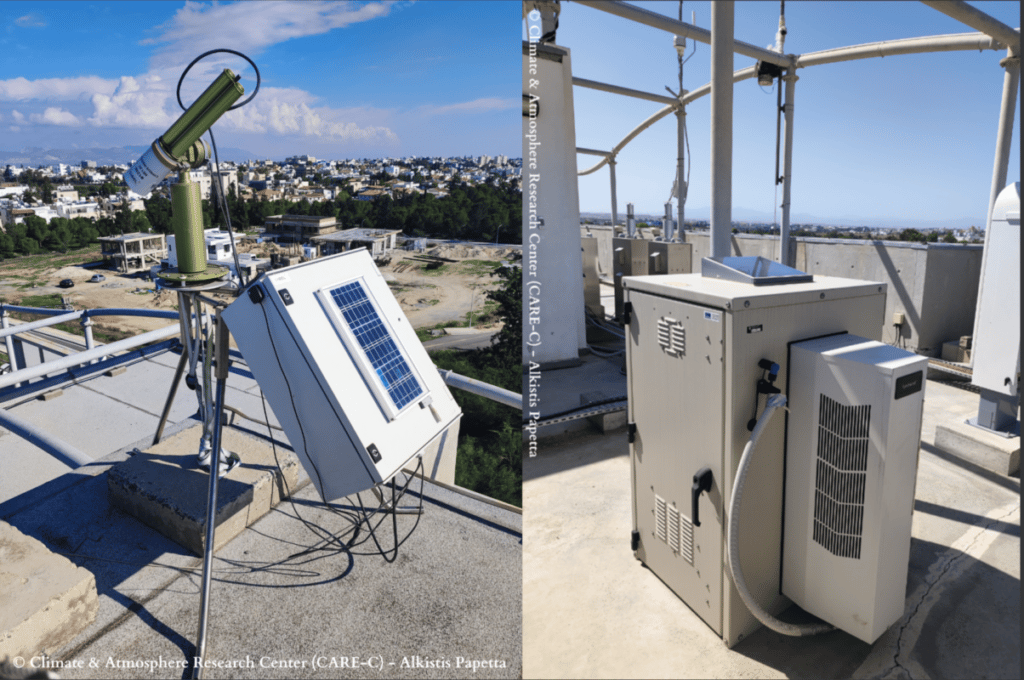CE376 - LiDAR
CE376 – Compact Automatic Aerosol LiDAR
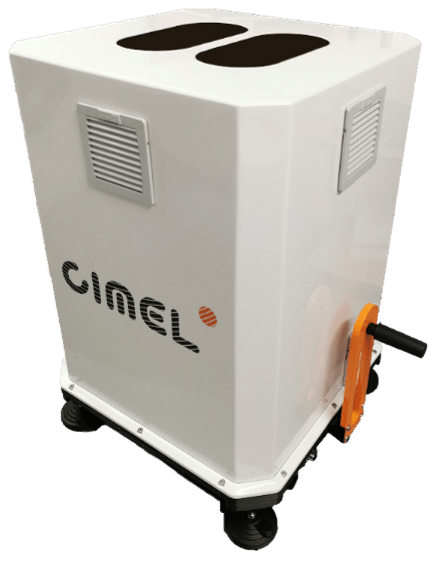
The CE376 is the latest compact, eyesafe elastic backscatter LiDAR, featuring outstanding performances for the automated continuous monitoring of aerosols.
It operates in the visible (green) and in the near infrared (NIR) with one
depolarization channel for enhanced aerosol characterization.
The rugged, fully integrated system operates without shutdown, human attendance, authorization, nor maintenance.
With its thermal enclosure, the LiDAR can withstand extreme environmental conditions.
The CE376 is particularly easy to install (indoor or outdoor with its thermal enclosure) and to transport to different sites.
It is therefore, the perfect solution to monitor industrial dust emissions, urban pollution, volcanic ash and all type of aerosol particles.
Key Benefits
- Aerosol measurements up to 15 km by night time (with typical AOD 0.2) and up to 6 km by day time (with typical AOD 0.1)
- Very short blind zone (< 100 m) with a full overlap from 1200 m (Green) / 700 m (NIR) range
- Real-time “quicklook” visualization
- Automatic backscatter/extinction profiles (Klett inversion with AOD or LiDAR ratio)
- High stability and low maintenance
- Aerosol characterization for each layer and stratification analysis
- Eyes safety compliance with EN-60825 / ANSI Z136
- Planet Boundary Layer (PBL) and cloud detection
- Easy transportation : Outdoor / indoor operation
Package contents
1 x CE376 LiDAR
1 x Flight-case
1 x Power supply cable (5 m)
1 x Ethernet Communication cable (20 m)
1 x Ethernet-USB converter
1 x USB-B to USB-A cable
1 x User Manual
1 x USB key with software and calibration files
Note 1: To be powered by mains.
Note 2: The telescope must be kept between +20°C and +30°C and may be installed within a thermal enclosure (not included).
Related solutions
Source
| Laser type |
Green laser: frequency doubled Nd:YAG NIR laser: pulsed laser diode |
| Wavelength |
Green laser: 532 nm NIR laser: 808 nm |
| Pulse energy |
Green laser: ~6 µJ NIR laser: ~4 µJ |
| Repetition rate | 5 kHz |
| Pulse width |
< 15 ns |
Optics
| Instrument configuration | Biaxial system |
| Telescope diameter | 96 mm for both emission and reception |
| Emission divergence | NIR channel: 450µrad Green channel: 420 µrad |
| Reception FOV | NIR channel: 510 µrad Green channel : ~500 µrad |
| Eye safety | Yes : IEC 60825-1 compliant |
| Bandwidth (FWHM) | NIR channel: 0.6 nm Green channel: 0.2 nm |
Data
| Data acquisition mode | Photon counting |
| Continuous acquisition | Yes |
| Acquisition time | < 1 s |
| Electronic range resolution | 15 m |
| Electronic range | From 50 m to up to 30 km |
| Data transfer to PC | USB or Ethernet |
CE376 Models
| Reference | Channels | Available bands |
| CE376-G | 532 nm | – Vertical aerosols and clouds profile (standard) – PBL |
| CE376-GP | 532 nm, depolarization | – Standard – Non-sphericity (Particle shape) |
| CE376-N | 808 nm | – Standard – PBL |
| CE376-GN | 532 nm / 808 nm | – Standard – Spectral dependence (Particle size) – PBL |
| CE376-GPN | 532 nm, depolarization / 808 nm | – Standard – Spectral dependence (particle size) – Non-sphericity (Particle shape) – PBL |
Environmental conditions
| Temperature range | +18°C to +28°C without thermal enclosure |
| Humidity | 5% to 75% |
Power
| Power supply | 100-250 VAC / 50-60 Hz |
| Typical power consumption | 40 W |
| Maximum power consumption | 200 W |
Mechanical Specifications
| Transportability | Yes |
| Dimensions | L 713 mm x W 463 mm x H 691 mm |
| Weight | 35 kg (might change depending on the option) |
Thermal Enclosure (in option)
| Temperature range (external) | -30°C to +55°C |
| Power supply | 115-230 VAC (50 Hz / 60 Hz) |
| Typical power concumption | 1300 W |
| Humidity range | 0-100% |
| Dimensions | 900 x 950 x 1300 mm |
| Weight | 93 kg |

